Brand
Is acrylic paint suitable for use on cardboard?
Home › Forums › Explore Media › Acrylics › Acrylic painting on gessoed cardboard? xpost
- This topic has 3 replies, 4 voices, and was last updated 18 years, 4 months ago by chaz .
Viewing 4 posts – 1 through 4 (of 4 total)
Author
Posts
June 18, 2005 at 9:36 pm #985067
Default
Hi. I asked this question in oils but I thought I’d ask in this forum too since I am still using my acrylics too. The question is could I paint on gessoed cardboard? I am starting to paint only on gessoed illustration board like Vallejo for a smooth surface and it is like cardboard in a way only acid free. I have some gesso and cardboard is free. I am not under any craziness that my stuff will be in a museum so only 80 years of ‘archivability’ or whatever is fine by me. I am almost certain that a painting in either acrylic or oils would be fine on cardboard for that time. Acrylics might even be better since it is a plastic and seems to be more durable. Anyone tried it? What do you think? Thank You
June 18, 2005 at 9:53 pm #1053483
Default
You can paint on about anything, styrofoam trays, boxboard, cardboard, TP, papertowels, brown paper bags, typewriter paper,old pizza boxes. Some will last a while but don’t expect much. Acids, additives and other things may affect the colors eventually and most certainly the durability. Chances are they will last longer with acrylics than with oil since the oils tend to deteriorate fibers if not primed or properly cared for.
Click here to go to the information kiosk My You Tube Channel 48hlc48
The only person you can’t fool, is yourself! (Oz The Great and Powerful)
“If you think you can, or think you can’t, your right!”
“The thing about art is that life is in no danger of being meaningless,” Robert Genn
June 19, 2005 at 6:07 am #1053484
Default
Cardboard has an unusual texture which isn’t immediately apparent. If you put one coat of gesso on it and then paint in acrylic, the texture is visible and in my view it’s not very pleasing. I suggest you give the cardboard two or even three coats of thick acrylic gesso, making sure you use a stiffish brush to give an interesting surface which will obliterate the underlying cardboard texture.
June 19, 2005 at 9:38 am #1053485
Default
I did a bunch of acrylic paintings on cardboard for awhile when I was too poor to buy canvas. If you do use cardboard, I wouldn’t use the corregated kind, because the texture of it really does show up a lot later. I’ve also found that after awhile the cardboard starts to bow towards the side you painted on. You can counteract this a little by painting a big “x” with gesso across the back after you have primed the front. I think it depends on how much water you put on the surface and how thick the paint is.
Another thing is that unless you put your painting in a sturdy frame and possibly with glass over it, cardboard is really hard to display on the wall and have it look nice.
I’ve done a few paintings that I turned out to be really happy with, and I really regretted doing them on cardboard because of the non-permanent look of the material. If it’s a painting you’re going to care about (not that you can always tell this when you start) I would definitely recommend paying a little extra for a piece of canvas. I think it’s worth it.
Cardboard, I’ve found, is absolutely great for paintings that you’re doing just for practice or learning purposes, because you can’t get much cheaper than cardboard! (See “Handyman Still Life”, a painting I did on cardboard last year that might be worth millions if only I had used canvas. Sigh…)
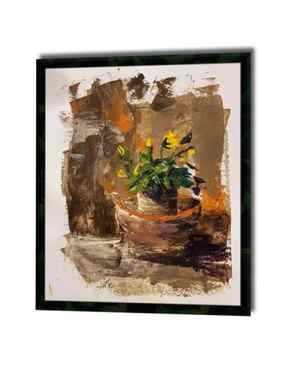
[FONT=Arial]Cedar Lee
ArtByCedar.com
The Unpretentiousness AG-788 cardboard risks!
Cardboard stands for any heavy-duty paper; therefore, the term is slightly avoided in the industry due to its vagueness. Cardboard art, however, is an art form that, besides the term’s ambiguity, denotes good posters/paintings made from different types of this material.
Cardboard has a porous surface, making it difficult for some paints to adhere. Acrylic and spray paint are among the best paints for cardboard. But for the best results. And that acrylic painting on the cardboard can be very challenging, even with a paint primer; if you try painting with a thick layer of acrylic, you could risk letting the water seep in. However, you can still use acrylic paint on your cardboard if you don’t dip your paintbrushes or sponges in water before and after using paint.
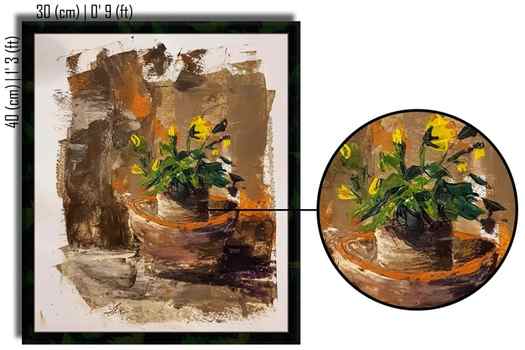
The Unpretentiousness AG-788 floral art
Over the centuries, artists have captured the rich symbolism of flowers, tracing the changing meanings of roses, irises, tulips, carnations, and more. Depending on the context, a single flower can represent reproduction or decay, purity or promiscuity, love or hardship—or nothing more than a pile of petals. Even though most artists paint flowers simply because it is a pleasing endeavor that is a fun challenge in color and form, it is an accessible subject that you don’t have to spend a fortune on for props, yet the payoff can be solid gold.
Maryam Bahman
Persian painter
Maryam Bahman was born on April 24, 1985, in Tehran. She has a master’s degree in animal physiology from Tehran and has been painting since 2010.
The first watercolor group exhibition was held in 2011. After that, in 2012 and 2013, she’s been having solo and group exhibitions, respectively.
In 2015, She designed the statue of the 2nd IAPESGW Regional Symposium: Women’s Empowerment in sport. She also designed the Bompad Statue and Corsac Fox watercolor and gifted it to the President of FISU in Gwangju 2015 games and 7 posters for the Ministry of Sports and Youth of Iran in 2015 and 2016. In the same years, she was the secretary of the think tank, the executive director of the Ministry of Sports and Youth, and the artistic advisor of the polo federation for several months.
In 2017, she won the watercolor exhibition at the Niş art gallery and DcKozmos gallery In Istanbul, and in the same year, she participated in the Fira Rome exhibition.
She also took courses in architecture and interior design in 2018. And in 2019, with a few friends, they opened the Manda Art and Architecture Atelier.
In 2020, she drew sketches for Gilgamesh magazine, and in 2021, she painted book sketches with the book design team from Kashan.
CyrusCrafts™ Interactive Artwork Shop
Producers and exporters of vintage and modern Iranian goods of high quality. With our excellent infrastructure, skilled and knowledgeable staff, and export services. We also offer the most original, diverse, decorative, and delicious items purchasable.
What Do You Think About This Product?
Size 0′ 9 x 1′ 3 (ft)
30 x 40 (cm) Material AG Acrylic
Cardboard Originate Persian Color Brown
Orange
White
Yellow Topic flower Usage Home Decoration
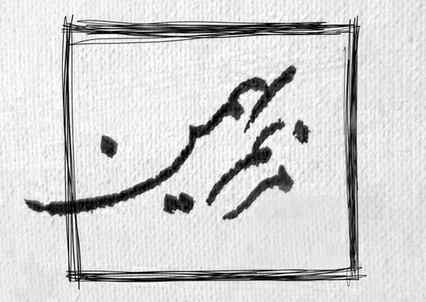
Brand
Prep the Surface Properly
The key to painting on cardboard effectively is to prep it properly. There’s a reason artists use proper canvases and specialist paper for painting: Untreated cardboard doesn’t make a perfect base for painting. It’s porous, so it soaks in water, making the surface warp and become uneven for little masterpieces.
Home Hacks & Answers
By Michelle Radcliff
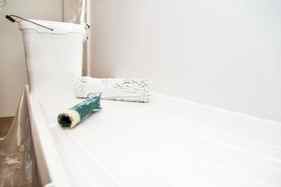
Home Hacks & Answers
By Kathy Adams
Expert Reviewed
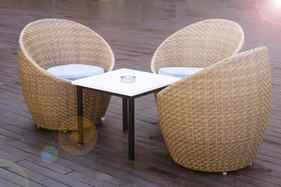
Home Hacks & Answers
By Annie Walton Doyle
Expert Reviewed
Video of the Day
To avoid this, apply a primer to the cardboard before painting. Of course, if you’re just playing around with the kids and don’t intend to keep the cardboard artwork, there’s no need to go to the trouble and (minimal) expense of priming the cardboard. If you’d like the artwork to have a longer life, priming is a good idea.
Prep the cardboard with a gesso primer. Gesso looks a bit like white acrylic paint but thinner. It dries hard and smooth when applied properly and will prevent paint from soaking into the surface below, so it makes a good base for painting onto all kinds of canvases, not only cardboard. Using a flat brush, paint the gesso onto the cardboard in long, smooth strokes. For best results, apply a second coat after the first has dried, painting in the opposite direction from the first layer.
Leave the gesso to dry completely before you paint over it. This may take as little as 10 minutes, although artists recommend leaving gesso-primed surfaces for up to 24 hours for best results.





